Sponsor Spotlight
BY Ade Akin | June 03, 2025
Revolutionizing Talent Acquisition: The Human Edge in an AI-Driven Era
Pat Griffin, the chief revenue officer at Randstad Digital, didn’t get the smooth search improvement he expected the first time he tested an artificial intelligence screening tool on a live candidate pool. What Griffin noticed instead was that an entry that perfectly matched every data point, like degrees, keywords, and experience, was flagged as “low fit.” For Griffin, that moment illustrated the promise and pitfalls of AI in talent acquisition, a topic he spoke about during a thought leadership spotlight at From Day One’s NYC half-day TA conference. The real advantage lies in “unique human connection” in a world focused on integrating artificial intelligence into everything, says Griffin. While AI can help to accelerate initial resume scans; it can also miss nuanced indicators such as tone, passion, and cultural fit that highlight a candidate’s true potential. “We can deploy AI agents to identify skill gaps or run pattern matching across hundreds of profiles, but only a recruiter can read between the lines,” he said. He cemented his argument by sharing a story about a top candidate who hesitated when asked to describe a professional setback, despite having impressive credentials on paper. An AI agent would have penalized the applicant for that, but a seasoned recruiter noticed her vulnerability and resilience, qualities many organizations find valuable. That recruiter's intervention showed that the human touch is essential in the screening process. Pat Griffin the chief revenue officer at Randstad Digital | Torc led the thought leadership spotlightGriffin says the use of AI in the recruitment process doesn’t replace recruiters. Instead, it empowers them by helping them to notice trends in application flow, pinpoint diversity gaps, and forecast hiring needs. “We’re using next-gen tools to model volume and quality of candidates, predicting when talent pools will dry up,” he said. “That lets us proactively build a digital community before roles even open.”Griffin highlighted a pilot program where Randstad Digital Torc used data innovation to identify emerging roles in software security. A targeted outreach campaign was created within weeks, with a 40% increase in qualified leads. “That’s not magic,” Griffin emphasized. “It’s a recruiter armed with insights, using AI in concert with their own expertise.”Griffin says the days of blackhole application portals and ghosting candidates are long gone and that having a smooth application process that prioritizes applicant experience is vital. He cautions against overreliance on AI as chatbots handle more roles like scheduling, answering frequently asked questions, and delivering personalized coaching tips for interviews. “We’ve seen AI agents misinterpret simple questions, leading to frustration. You still need someone monitoring those conversations,” he said. Randstad Digital introduced a hybrid recruitment process to combat the limitations of artificial intelligence. AI handles routine tasks, while human recruiters step in at critical touchpoints. “If a candidate expresses uncertainty, that triggers a handoff to a human,” Griffin said. “That balance improved our satisfaction scores by 25 percent.”Griffin tackled the role of AI predictions in the hiring process, noting that while machine learning excels at sifting through data and forecasting trends, it struggles with contextual judgment. “We saw false positives in early models, candidates flagged for 'overqualification' who turned out to be perfect fits after conversation,” he said. That led to the creation of new guardrails, such as all automated disqualifications requiring human review. Companies should view technology as a recruitment tool, not a replacement for recruiters, says Griffin. He highlighted three pillars for transforming any organization’s recruitment process. Organizations can integrate AI strategically by starting with pilot projects, such as improving search results for niche roles, and then scaling the models that prove successful. At the same time, it's essential to invest in upskilling by providing recruiters with training in data literacy and the ethical use of AI, ensuring that innovation is balanced with human judgment. Finally, fostering a digital community through ongoing engagement with potential candidates via social platforms and virtual events can help nurture long-term interest and relationships.Griffin urges recruiters to remember that the recruitment process is all about connecting with the right people. “AI agents are powerful, but they aren’t human,” he said. “When we prioritize unique human connection, we future-proof our hiring models and deliver an exceptional candidate experience.”Editor’s note: From Day One thanks our partner, Randstad Digital Torc, for sponsoring this thought leadership spotlight. Ade Akin covers workplace wellness, HR trends, and digital health solutions.(Photos by Hason Castell for From Day One)
